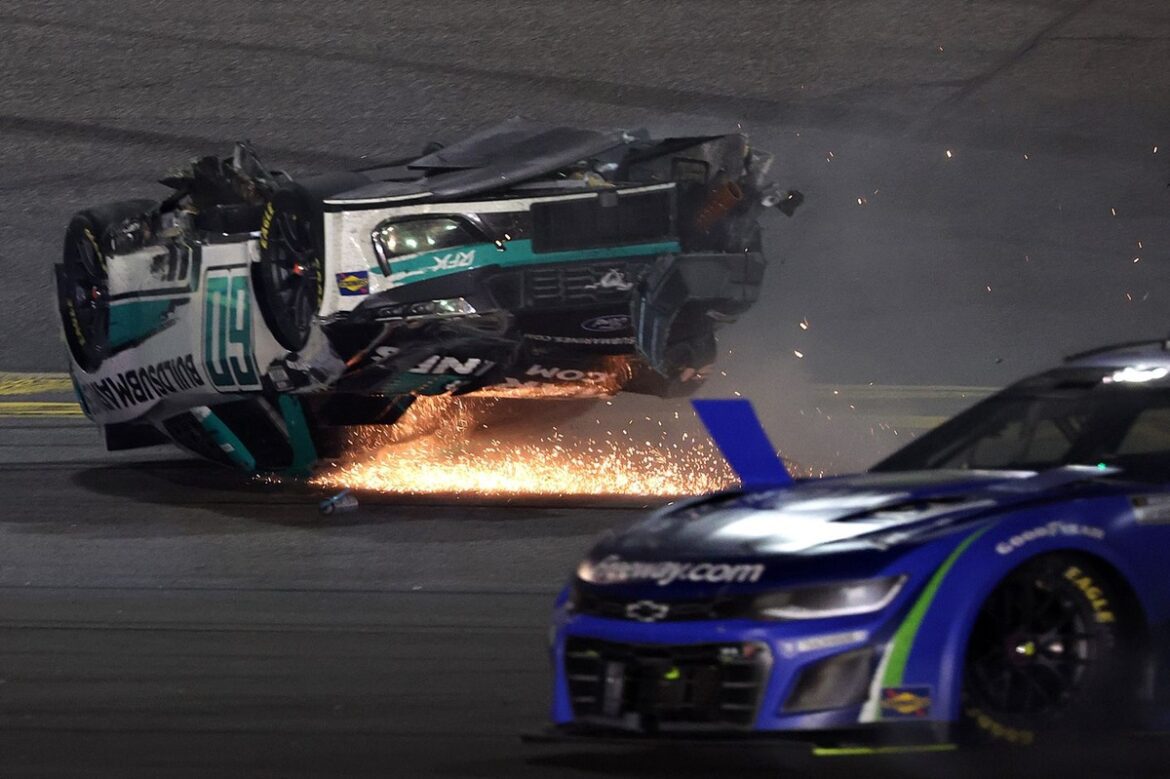NASCAR’s Ongoing Efforts to Prevent Airborne Crashes: Ryan Preece’s Call for Change
When Ryan Preece experienced a terrifying flip during the Daytona 500 earlier this year, it raised urgent questions about the safety of NASCAR’s Next Gen (Gen-7) vehicles. This incident was not an isolated occurrence; over the last three years, there have been eight instances where Cup cars have completely overturned, with five of these flips happening in just the past year. Preece, who most recently endured a harrowing crash that saw his vehicle barrel-roll nearly a dozen times at Daytona in the summer of 2023, has called on NASCAR to take decisive action to prevent such dangerous situations.
In a recent discussion with Motorsport.com, Preece expressed his hopes for a timely solution, emphasizing his belief that NASCAR would eventually find a resolution that satisfies all parties involved. However, despite the urgency of the situation, there have been no aerodynamic updates implemented between February’s Daytona 500 and the upcoming Talladega race.
Last year, NASCAR took significant steps to address the issue of airborne incidents, particularly after Corey LaJoie’s terrifying flip at a non-superspeedway track. Yet, despite these efforts, there has not been a noticeable decrease in such incidents, prompting concerns about the effectiveness of current measures.
As NASCAR prepares for the Talladega race, work continues on addressing the dangers posed by airborne stock cars. A recent tire test conducted by Goodyear at Michigan served as a platform to explore potential updates to the vehicles. But what specific changes is NASCAR considering to enhance safety and performance?
One of the key innovations being explored is a new anti-flip flap. Dr. Eric Jacuzzi, an aerodynamics specialist and vice president of vehicle performance innovation at NASCAR, recently shed light on this topic. In a conversation with renowned crew chief Steve Letarte on the Inside The Race podcast, he revealed that NASCAR is developing a flap that operates similarly to the roof flaps currently in use, but this new component would be positioned on the A-post of the cars.
Jacuzzi’s insights suggest that preliminary testing indicates this new flap could substantially increase the liftoff speed of the vehicles by approximately 40% to 50%. This enhancement would make it significantly more challenging for cars to flip over on their own during races.
In analyzing past incidents, Jacuzzi pointed out that Preece’s car became airborne when it transitioned from the asphalt to grass during the 2023 race, allowing air to get underneath the vehicle and lift it off the ground. He noted that a small lip on the edge contributed to the dramatic rise of the car, culminating in a frightening airborne crash that led to the removal of grass from Daytona’s backstretch.
Jacuzzi acknowledged that Preece’s wheelie at 190 mph during this year’s Daytona 500 was an unusual situation, one that presented unique challenges for NASCAR in terms of safety. He remarked that there wasn’t much that could be done in that specific scenario, as NASCAR even contemplated altering parts of the vehicle’s floor to mitigate risks, but those changes did not yield the desired results.
The most shocking flip of the 2024 season transpired at Michigan, where LaJoie flipped over after a seemingly routine spin at a non-superspeedway track. Jacuzzi explained that environmental factors played a crucial role in this incident. While LaJoie’s car was spinning at a 90-degree angle, a 30 mph wind pushed the airspeed to more than 220 mph, making it easier for the vehicle to flip.
While the new flap designed for the A-post is still in the testing phase and not yet ready for race day, Jacuzzi anticipates that it will be ready in time for the summer race at Daytona. Ongoing tests are being conducted to ensure its durability and effectiveness.
According to sources, these safety updates have been under consideration even before Preece’s alarming flip during the Daytona 500. The goal is to have these enhancements ready for the race scheduled for August 23 at Daytona International Speedway.
As NASCAR continues to navigate these safety challenges, the organization is committed to implementing improvements that prioritize driver safety and performance. The potential introduction of the new A-post flap marks a proactive step towards addressing the ongoing issue of airborne crashes in stock car racing. With the stakes high, both for the drivers and the sport as a whole, the pursuit of solutions remains a top priority for NASCAR.
The recent incidents have sparked a broader conversation about the safety measures in place for drivers and the technology used in stock cars. As the sport evolves, the integration of advanced aerodynamic solutions and rigorous testing will be essential in maintaining the balance between speed and safety.
Fans and stakeholders alike are eagerly watching as NASCAR works to refine its vehicles and enhance safety protocols. The hope is that through innovation and collaboration, the organization can continue to protect its drivers and ensure that the thrilling nature of stock car racing can be enjoyed without the looming threat of airborne crashes.
The racing community looks forward to seeing how these developments unfold in the coming months, especially as NASCAR gears up for its summer events. With every flip and crash, there is a renewed emphasis on safety, and the commitment to finding effective solutions is stronger than ever. As NASCAR pushes forward, the integration of new technologies and safety measures will be crucial in shaping the future of the sport, ensuring that drivers can compete at high speeds while minimizing the risks associated with airborne incidents.
In conclusion, the ongoing dialogue around safety enhancements is vital as NASCAR seeks to protect its drivers while maintaining the exhilarating spirit of the races. As fans await the next developments, the anticipation grows for a safer and more secure racing experience in the years to come.
